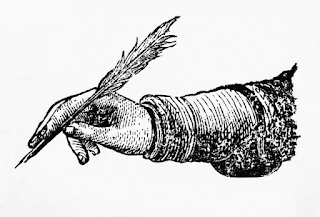Daniel Bradley ✒ writes to the North's British Justice Minister, Naomi Long regarding the death of his brother at the hands of British troops during Operation Motorman.


Dear Naomi,
I write regarding an Inquest held into the death of my brother Seamus Bradley, on 31st July 1972. I have fought for many years and pursued every possible line of enquiry to uncover the truth of what happened to my brother Seamus on the night of 31st July 1972.
I was present when my brother was killed and watched as a soldier fired the first shots which resulted in his death. This event has haunted me, my family and all who knew Seamus in the years since. The subsequent treatment of investigations into the death of my brother caused immense pain and distress to myself, to my parents who were distraught at the loss of a son, and to the many friends Seamus had in our community in Creggan.
 |
After many decades and without any assistance other than my own resolve and determination for the truth, I was able to secure a second Inquest into the death of my brother Seamus, due to serious and consequential flaws in the original Inquest into my brother’s death held in October 1973. The outcome of this second Inquest was published by the Judicial Communications Office on 15th August 2019, and I have attached a copy of this for reference.
In addition to this I have attached two witness statements of the events of 31st July 1972 from a Constable William Thompson Cunningham, as well as ambulance driver John Walter Simpson from the first Inquest into the death of my brother on October 1973. I would like to bring to your attention what I feel to be a major and blatant omission and disregard for the judicial and investigative process, evident in these attached documents.
Both of the attached contemporaneous witness statements from the original Inquest attest to the fact that an ambulance was called for my brother at 6:15am from Altnagelvin to collect my brother from St. Peter’s School in Creggan, which is some distance away on the other side of the City of Derry. Constable William Thompson Cunningham’s attached statement clearly states that around 7:00am he remembers viewing my brothers remains in the morgue of Altnagelvin Hospital for forensic examination.
These documents from the Inquest of 1973 were entirely omitted from the above mentioned second Inquest into the death of my brother on the night of 31st July 1972, despite the consequential and clear statements they contain regarding the timeframe of events that night. In the published report of the second Inquest into the death of my brother dated 19th August 2019, statement one of Private Jamieson states clearly that my brother was shot at 4:45am, within the first hour of the commencement of Operation Motorman at 4:00am on the night of 31st July 1972.
I believe these attached statements from the original Inquest into the death of my brother in October 1973, as well as the testimony of Private Jamieson during the Inquest of 2019 demonstrate clearly and unequivocally that a period of two hours elapsed between the initial shots fired at my brother and his arrival at Altnagelvin Hospital.
However, in its final publication of August 2019, the second Inquest into the death of my brother rules that he had been shot between 5am and 6am, and that a period of only one hour had elapsed between this event and my brother’s arrival at hospital. This longer time period of two hours would, I believe, have been sufficient for my brother to have received urgent emergency care, and indeed had my brother been taken immediately for medical care it is possible he may not have died on the night of 31st July 1972.
The second Inquest, published in August 2019, in the absence of this vital evidence and testimony found that a period of only one hour had elapsed between the death of my brother and his arrival at Altnagelvin. I have no explanation personally as to why these vital testimonies were omitted from the Inquest findings of August 2019. I appeal to you to seek information from the Police Service of Northern Ireland, as well as records at Altnagelvin Hospital regarding the precise time of the shooting of Michael Doherty, who was also badly wounded on the night of Operation Motorman on 31st July 1972, and arrived at the hospital some time before my brother Seamus, which would corroborate with the evidence given at the second Inquest of August 2019.
I am very grateful for your reply to my correspondence sent via Mark Durkan on 7th September, and would very much appreciate the opportunity to meet with you and to discuss the above. Thank you for your kind words regarding my own personal campaign for justice, moreover, simply for the full truth of the events of the night of the death of my brother in 1972. Despite the passage of many years and many obstacles I can assure you my own determination and resolve, for the truth and for justice for my brother, has never wavered.


















